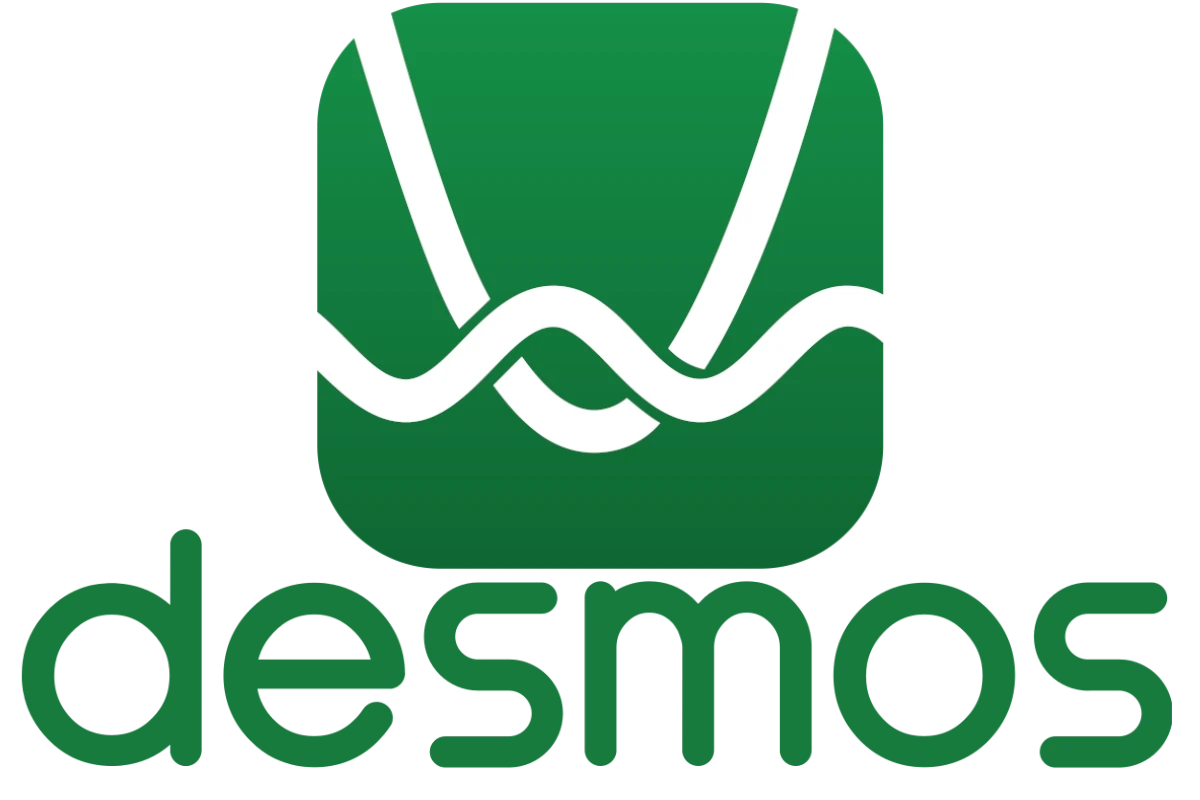Combining the world of art with the precision of mathematics, Desmos Art Generator emerges as a tool that allows users to create intricate designs and images through the lens of mathematical functions. This digital convergence harnesses the capabilities of the Desmos graphing calculator, a tool well-regarded for its lucid and interactive approach to visualizing equations. Anyone with interest, from students to hobbyists, can transform equations into stunning visual pieces, which often resemble works of art found in galleries.
Art generation through Desmos involves plotting various mathematical functions to form images, where each line, curve, and shape corresponds to a unique equation. This activity not only serves as a creative outlet but also provides a deeper understanding of how equations represent visual entities. Through the Desmos platform, users can adjust parameters, employ sliders, and animate parts of their creations to bring static images to life or to explore changes in real-time, making math an engaging and visual experience.
Explore Creativity with Desmos Graphing Calculator
The Desmos Graphing Calculator does more than just plot equations. With a bit of ingenuity, you can turn it into a powerful tool to create unique and intricate artwork.
What is Desmos Art?
Desmos art is a form of digital art where you use mathematical equations and functions on the Desmos Graphing Calculator platform to create designs, patterns, and even realistic portraits. It’s a fun way to merge math, art, and creativity.
How Does it Work?
Here’s the basic process behind creating Desmos art:
- Mathematical Concepts: Desmos art relies on understanding mathematical functions, such as lines, circles, parabolas, and trigonometric functions.
- Graphing: You input different equations and inequalities into the Desmos calculator to generate visual shapes.
- Customization: Manipulate the equations by changing parameters, colors, and restrictions to fine-tune the look of your shapes.
- Combining Elements: Layer multiple equations to create complex designs and patterns.
Desmos Art Examples
To give you an idea of what’s possible, here are some common types of Desmos Art:
| Type of Art | Description |
|---|---|
| Geometric Patterns | Repeating shapes, tessellations, and symmetrical designs |
| Landscapes & Scenery | Mountains, trees, oceans, and other natural elements created with curves and shading |
| Portraits | Realistic or stylized portraits of people or characters, often using many equations |
| Animations | Art that changes and moves using time variables or sliders |
Resources to Get Started
- Desmos Website: The official Desmos Graphing Calculator (https://www.desmos.com/calculator)
- Online Tutorials & Communities: Find tutorials and inspiration on YouTube, Reddit, and other dedicated communities.
Key Takeaways
- Desmos Art turns math equations into visually appealing art using the graphing calculator’s features.
- The platform is approachable for beginners and offers tools for creating and animating art.
- Users can share their Desmos artwork, contributing to a community of math and art enthusiasts.
Getting Started with Desmos Art
Desmos provides a dynamic canvas for expressing creativity through mathematics, allowing beginners and experienced users to draw impressive artwork with the graphing calculator. This section walks you through the foundational steps on how to harness the capabilities of the Desmos platform for crafting art with mathematical functions.
Understanding the Desmos Platform
Desmos is an advanced graphing calculator that operates online. This calculator isn’t just for solving equations; it can become your digital canvas for artistic expression. To begin, navigate to the Desmos website and choose the graphing calculator. This environment uses a coordinate system where you can input equations to create visual shapes and lines.
Drawing Basics: Lines, Circles, and Curves
Lines can be drawn using simple linear equations. For circles, the equation is a bit different; use (x – h)^2 + (y – k)^2 = r^2, where (h, k) is the center and r is the radius. And to draw curves, input more complex equations—parabolas, hyperbolas, sine and cosine functions are just the start. Let’s look at how to draw these:
- Line: y = mx + b
- Circle: (x – 1)^2 + (y – 3)^2 = 9
- Parabolic Curve: y = ax^2 + bx + c
Start with these basic shapes on your Desmos canvas to grasp how the equations turn into visual art.
Adding Complexity with Inequalities and Sliders
By incorporating inequalities into your equations, you can shade areas on your Desmos graph, adding depth and complexity to your designs. For example, using y < 2x + 3 will shade below the line, creating a filled effect.
Sliders boost the interactive element, enabling you to adjust values dynamically and see how they transform your drawing in real-time. Add a slider by using curly braces in your equation like this: a{x} or b{x}. Dragging these sliders will alter your art, allowing for animations and more intricate designs.
With these tools—equations for lines, curves, and circles, inequalities for shading, and sliders for interactive transformations—your journey into the world of Desmos art is just beginning. Experiment with these features to find out how different equations change the image and inspire your creativity.
Advanced Techniques and Sharing Your Work
The key to mastering Desmos art is understanding advanced graphing techniques and sharing creations with a wider audience. This section dives into transformation tools and animations, explores color and design possibilities, and offers guidance on showcasing Desmos artwork.
Mastering Graphical Transformations and Animations
Graphical transformations in the Desmos graphing calculator provide powerful ways to manipulate shapes and patterns. Use the rotate tool to spin objects, which adds interest to your piece. Include animations to bring static images to life by adjusting variables over time. These techniques help in visualizing math art that contains movement or changes perspectives, offering a pseudo-3D appearance. Not only do they express creative ideas but also demonstrate a deep understanding of math functions.
Color and Design: Custom Colors and Size Adjustments
A captivating Desmos art piece often features striking colors and an eye-catching layout. You can apply custom colors to give your artwork an individual touch. Choose from an array of hues to match the desired look and feel. Manipulate the size of graphical elements with precision to draw the viewer’s attention to specific areas. This attention to detail in colors and size customization makes the artwork stand out as more polished and visually appealing.
Disseminating Your Desmos Art on Social Media
Once you’re proud of your creation, it’s time to share it. Post your Desmos art on social media platforms where viewers can appreciate the techniques you’ve employed. Desmos provides a direct way to share your work with a simple link. Participating in the Desmos art contest can introduce your designs to a community of enthusiasts and offer inspiration. Remember, when sharing your work, be mindful of copyright laws to respect the originality and rights of creators. Sharing on platforms can not only express your skill but also encourage others to try their hand at math art.
Frequently Asked Questions
Desmos graphing calculator enables users to transform equations into captivating visuals, allowing the creation of custom art. The following section addresses some common questions about using Desmos for art creation.
How can one create custom artwork using the Desmos graphing calculator?
Anyone can create custom artwork by plotting functions and adjusting them to craft visual pieces. By manipulating variables and coefficients, users can mold shapes and patterns unique to their artistic vision.
What are the steps to input equations for art on Desmos?
Creating art starts with inputting basic mathematical functions into the Desmos platform. Users can plot points and use sliders to modify parameters, allowing them to see how changes affect the graph and gradually build up to more intricate designs.
Is there a way to convert images into Desmos graphs?
Although Desmos does not convert images directly into graphs, users can trace over an image with various functions and inequalities to recreate the picture within the calculator’s constraints.
Can I participate in the Desmos Art Contest, and what are the rules?
Participation in the Desmos Art Contest is usually open to anyone interested. Contest rules often set guidelines for originality, appropriate content, and use of specific mathematical concepts, which are detailed on the contest’s announcement page.
Are there any resources available for beginners to learn Desmos calculator art design?
For beginners, Desmos offers tutorials and a helpful user community. These resources guide new users through the process, highlighting tools and techniques to start creating mathematical art.
What are some tips for optimizing equations to create complex designs on Desmos?
To optimize equations for complex designs, start with simple shapes and progressively add layers of complexity. Use sliders intelligently to manipulate multiple aspects of your functions, and consider symmetry and transformations to add depth to your artwork.







